In the image below, a crane perches on the edge of a lily pad, framed by twining lilies and vines. It depicts a still moment in a picturesque landscape as the crane patiently waits over the water, waiting for the chance to dive underneath and catch its prey. Beautiful tones of green, yellow, and orange bronze capture the beauty of this natural scene in a simple, every day object. The humble fruit basket is elevated to an object of fine beauty by incorporating the elegance of natural designs. This appreciation for the simple, elegant beauty of nature is a tell-tale characteristic of the Art Nouveau movement.
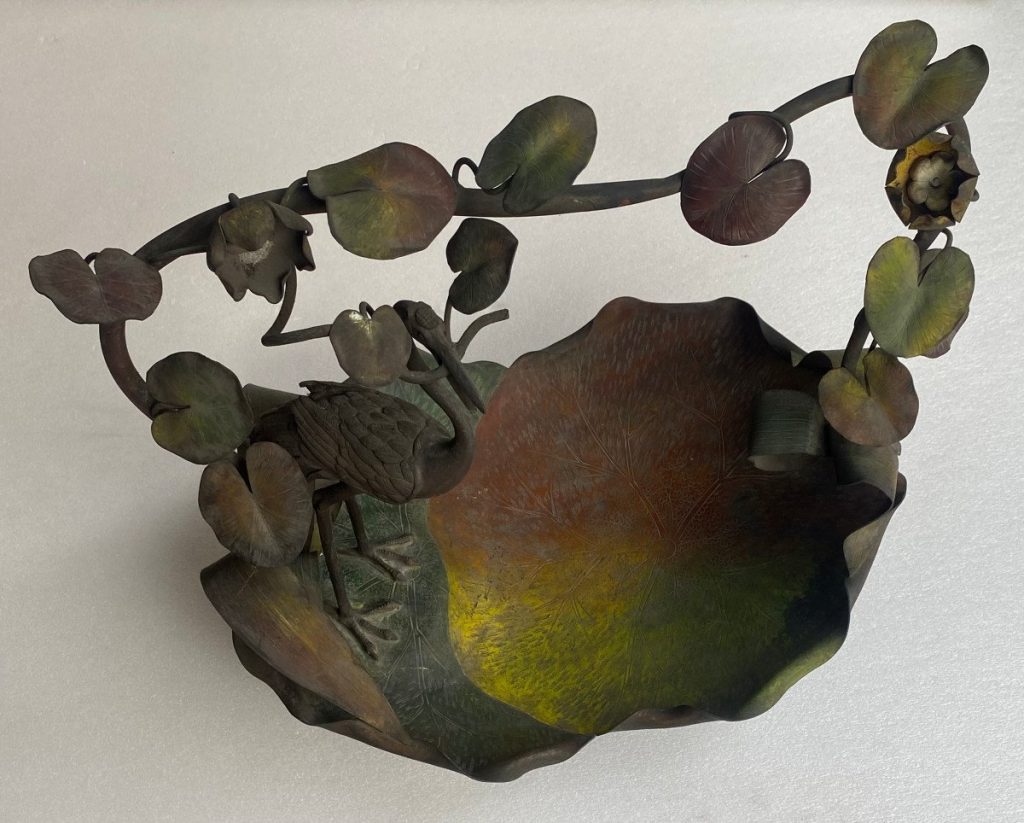
Art Nouveau bronze fruit basket depicting a Japanese crane and water lilies. © A.ABC Pascal
Art Nouveau was an international artistic movement that initially emerged in Europe in the late 19th century, quickly spreading across the world. It marked a significant departure from the academic art of the time, embracing a refreshing, highly stylized aesthetic characterized by sinuous lines, intricate patterns, and a harmonious blend of natural and abstract forms. The movement spanned various art forms, including architecture, decorative arts, graphic design, fashion, and painting. It flourished during the Belle Epoque period from around 1890 to 1910 and was known by different names in different regions, such as “Jugendstil” in Germany, “Liberty” in Italy, “Modernismo” in Spain, and “Secession” in Austria.
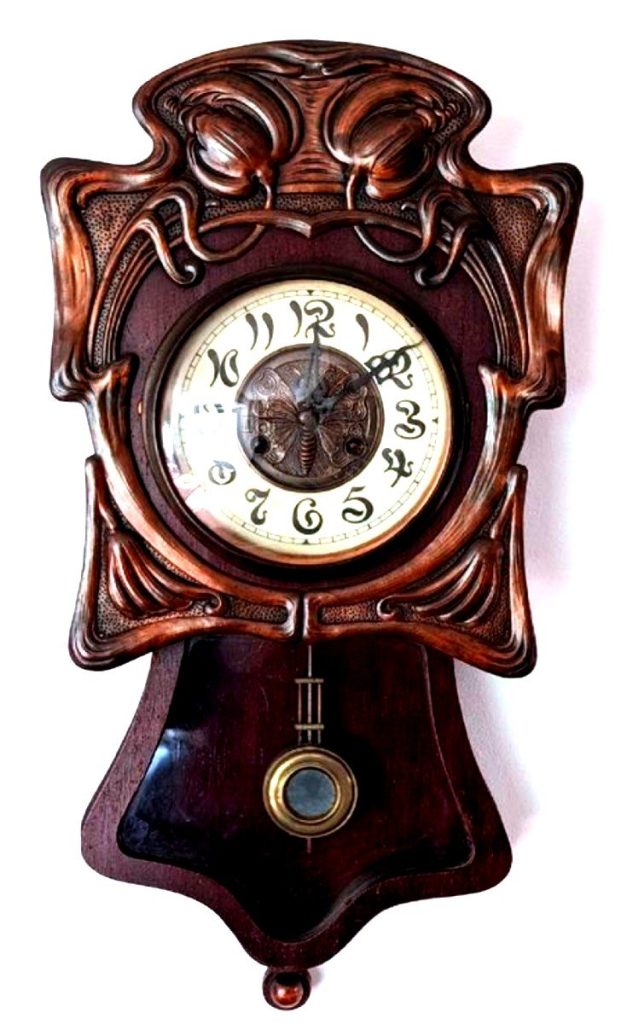
Jugendstil/Secession clock, from Austria or Germany. Carved wood depicts flowers and a butterfly. © O Passé Composé
Origins
Art Nouveau arose as a reaction to the industrialization and mass production of the 19th century that minimized the creativity of artistic output. In rebellion against the stifling monotony and historicism of 19th-century aesthetic directives, pioneers of the Art Nouveau movement sought to break away from the rigid conventions of academic art to create something inspiring and new. They also sought to break down the distinction between fine and applied arts, making beauty more accessible and relevant to the masses. The movement’s roots can be traced to the Arts and Crafts Movement in Britain, as well as being influenced by Japanese art and the British Aesthetic Movement. Additionally, the fascination with nature and the symbolic forms found in Celtic and Gothic art contributed to the development of Art Nouveau. By focusing on elegant, curved forms and natural beauty, these influences came together to overwrite the ugliness and materialism of the Industrial Age.
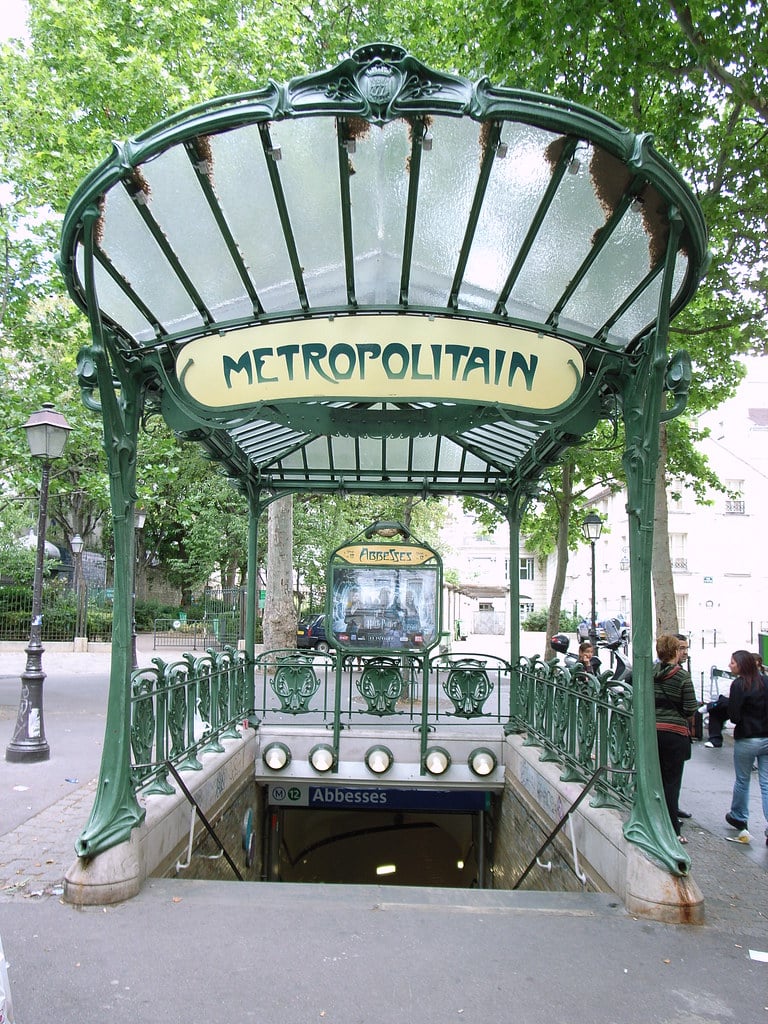
Entrance to the Paris Metro, designed by Hector Guimard in the Art Nouveau style. CC
Main Contributors
One of the earliest innovators of the Art Nouveau movement was Victor Horta, a Belgian architect who played a key role in the early development of Art Nouveau architectural styles. His designs featured organic forms, curved lines, and an emphasis on craftsmanship. His work then inspired Hector Guimard, who went on to design the iconic Art Nouveau entrances of the Paris Metro (pictured above), further defining the style through the use of fluid lines and nature-inspired motifs. The style gradually began to spread into other forms of art, including decorative arts and graphic design. One of the most well-known figures of the Art Nouveau movement was Alphonse Mucha, a renowned Czech artist whose distinctive style became synonymous with the Art Nouveau movement. He was particularly celebrated for his decorative advertisements, featuring elegant and elongated female figures surrounded by intricate floral motifs.
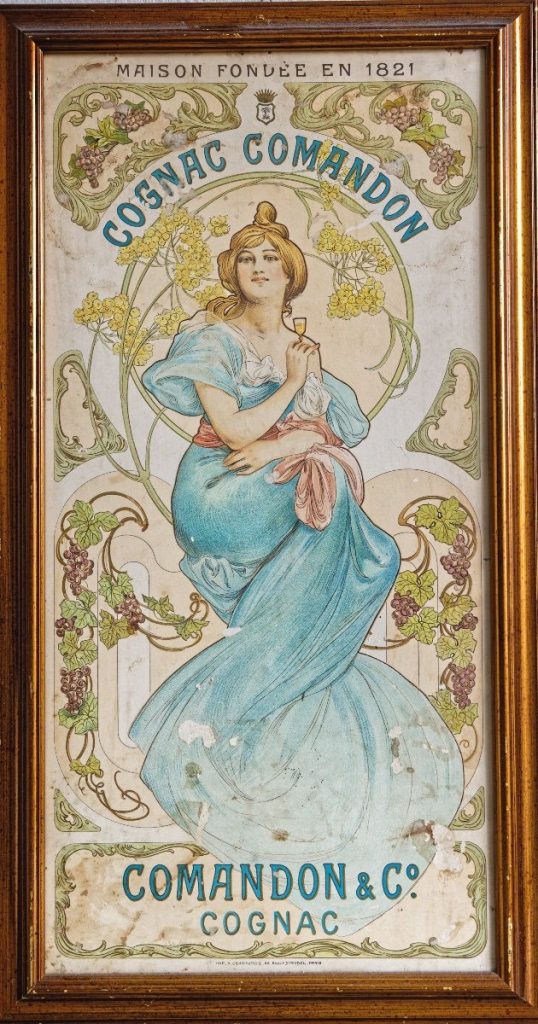
Advertisement for Cognac Comandon by Alphonse Mucha. © Deco Royal
Art Nouveau also had a significant influence in the field of glasswork and jewelry, becoming a favorite source of inspiration amongst famous designers like Louis Tiffany. Another leading figure of the Art Nouveau movement in Paris was the dealer Siegfried Bing, whose store, L’Art Nouveau, showcased the works of the most influential artisans in the movement. Many of the these artisans belonged to Ecole de Nancy (The Nancy School), a coalition of talented designers like Louis Majorelle and Emile Gallé whose work revolutionized the French art and architecture scene.
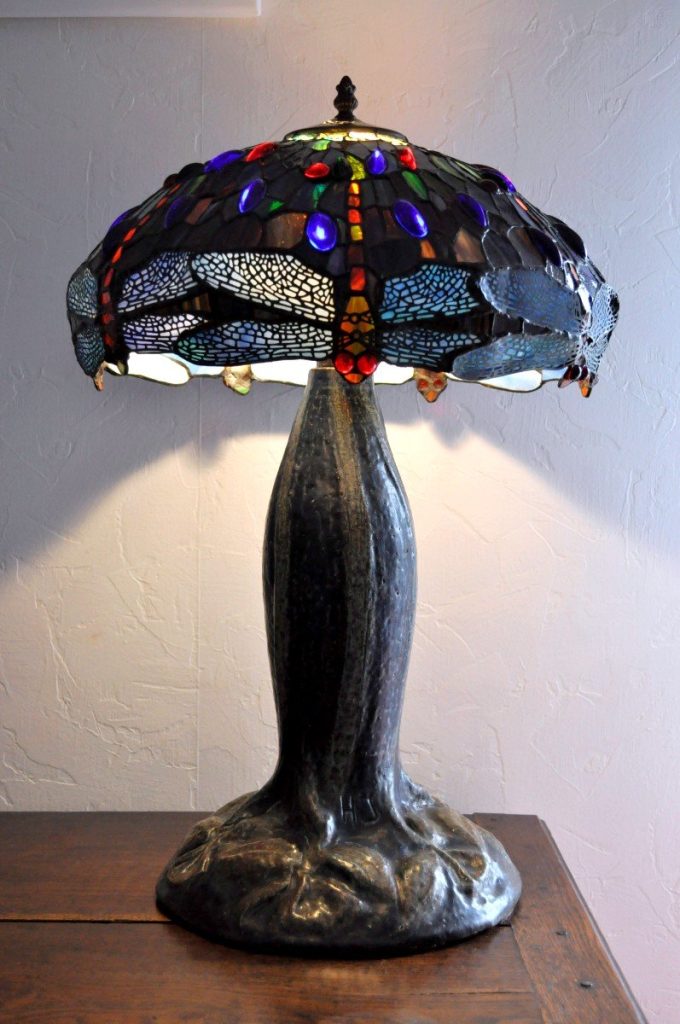
Art Nouveau Tiffany lamp depicting dragonflies. © Artantic
Aesthetic Influences
As mentioned above, the Art Nouveau movement drew inspiration from various traditions that blossomed around the turn of the century. Much of the early work in the genre drew from the British Arts and Crafts movement, which emphasized the quality and simple beauty of traditional art forms. A profound appreciation for craftsmanship was central to the Art Nouveau movement, focusing on the production of intricate and meticulously crafted pieces across various mediums. Attention to detail and the pursuit of excellence in craftsmanship became synonymous with the movement. This emphasis on skill elevated Art Nouveau creations to a level of exquisite beauty and sophistication.
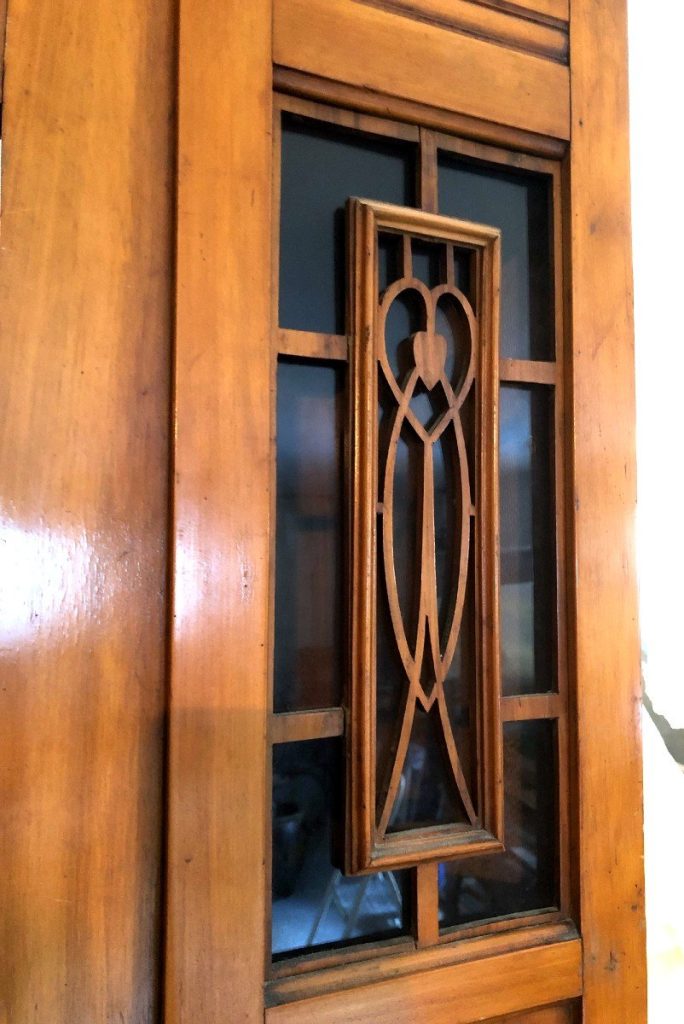
Fine woodwork on an Arts and Crafts style wardrobe. © Galerie Aire Ona
Another crucial influence on Art Nouveau came from the captivating aesthetics of Japanese art, particularly the woodblock prints known as ukiyo-e. The asymmetry, flowing lines, and bold use of negative space in Japanese prints by the likes of Hokusai, Kunisada, and Hiroshige captured the imagination of Art Nouveau artists. They embraced the simplicity and elegance of Japanese design, incorporating its distinctive elements into their own creations. This infusion introduced a sense of dynamism and fluidity, adding depth and movement to the otherwise static visual arts of the time.
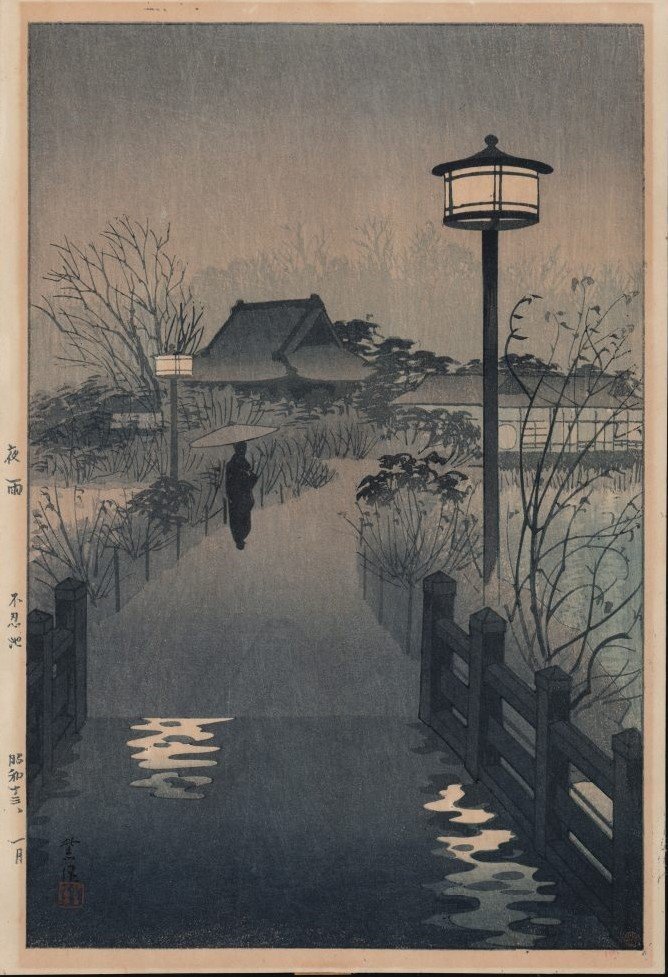
“Rainy Evening On Shinobazu Pond,” Japanese woodblock print By Shiro Kasamatsu. Ink on paper. © Reflets des Arts
Art Nouveau was not solely concerned with aesthetics; it also delved into the realm of symbolism and spirituality, reflecting philosophical interests of the time. Drawing inspiration from mystical and esoteric sources, artists explored themes of dreams, the subconscious, and spiritual realms. Symbolism played a significant role in the movement, with many works infused with hidden meanings and allegorical elements. Decorative objects often include nymphs, fairies, and other beautiful inhabitants of the spiritual realm. This infusion of the symbolic and spiritual lent a deeper layer of meaning to Art Nouveau’s ornate designs, inviting viewers to explore beyond the surface beauty.
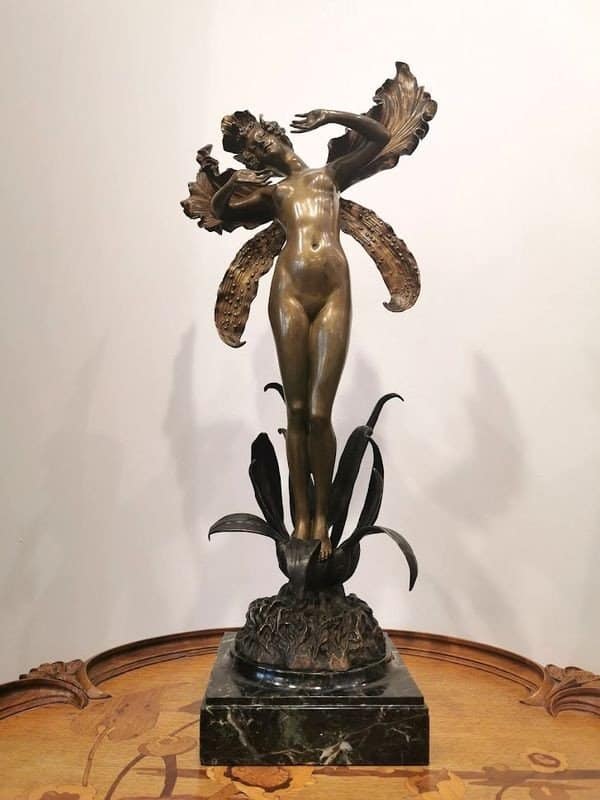
Louis Chalon bronze representing a young nymph winged with orchid leaves and wearing a flower, green marble base from the Alps. © Antiquités Art Nouveau
Beauty in Nature
However, one of the most defining features of Art Nouveau aesthetics was how it highlighted the beauty of the natural world. Central to the essence of the movement was a deep reverence for the beauty and complexity of nature. Artists and designers of this movement sought to reintroduce nature’s harmonious forms and patterns into a society undergoing rapid industrialization and artistic sterilization. While industrial society was made up of harsh edges and broken lines, Art Nouveau embraced the soft curls and undulating shapes that make up the natural world. The sinuous lines of plants, the graceful curves of flowers, the delicate wings of butterflies or dragonflies, and the rhythmic patterns found in nature’s creations became central motifs in Art Nouveau art, architecture, and decorative arts.
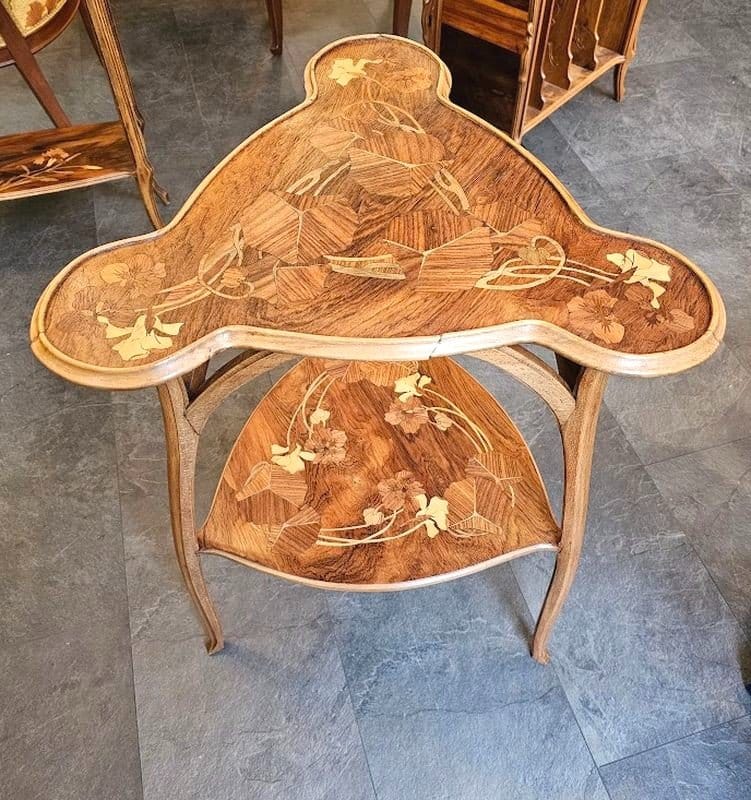
Twining nasturtium vines depicted in delicately inlaid beech and rosewood. Pedestal table created by Camille Gauthier. © Antiquités Art Nouveau
In the image below, intricately detailed bronze ginkgo leaves grow out from under the vase and curl around the graceful shape of the glass. One of the oldest still-living species of trees, the ginkgo is notable for its delicate fan-shaped leaves which are unlike any other. The design of this vase highlights their unusual beauty, the delicate lines and curves that have persisted across millenia and resisted extinction. Not only are the leaves beautiful in their form and structure, they represent hope, strength, and resilience, an unassuming crown jewel of the natural world.
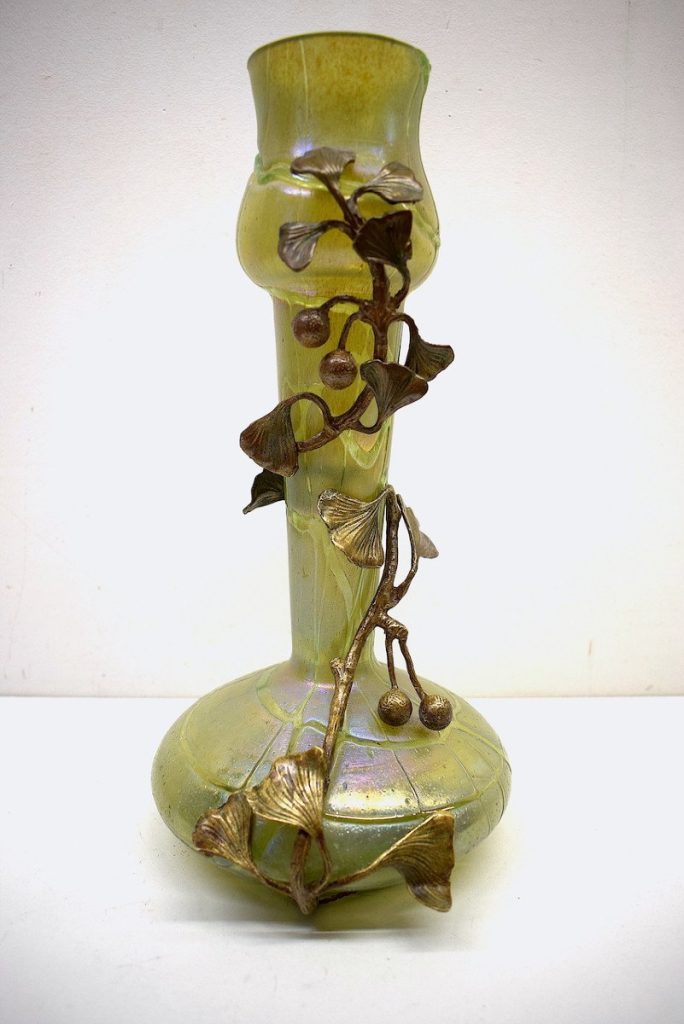
Loetz vase in iridescent glass, decorated with bronze ginkgo leaves and fruit. © A Coté Antiquités
Ornamentation and Elegance
As seen above, the natural motifs of Art Nouveau were not merely decorative elements but symbolic expressions of much greater philosophical ideals. The movement rejected the rigidity of traditional artistic norms, embracing the idea of “total art” or Gesamtkunstwerk, where every aspect of design was interconnected. Elaborate ornamentation inspired by natural forms adorned everything from architecture and furniture to jewelry and graphic design. The use of such organic imagery was not only aesthetically pleasing but also a statement—a homage to the intrinsic beauty and inherent elegance found in the natural world.
The creative use of glass grapes to create the lamp pictured below highlights how Art Nouveau designers looked to the roots of human’s connection with nature and drew from its beauty. Our relationship with grapes is perhaps one of the oldest in the world, dating back as far as 6500 B.C.E. They have long served as a symbol of vitality, abundance, and fertility. Particularly in western cultures, grapes have taken a center place at the table and in art, whether it be in the still-lifes of the Dutch masters or the wine in the cups of the 12 Apostles in The Last Supper. Beyond the natural beauty of the round, delicate fruits and gently curling vines, grapes are a treasured theme in art because of the role they have served in the lives of people for centuries. They are the joy of toasting to good news, a symbol of faith, a promise of abundance. It is no wonder that Art Nouveau artists sought to draw on this physical and symbolic beauty in a world that they saw as increasingly industrial and bleak.
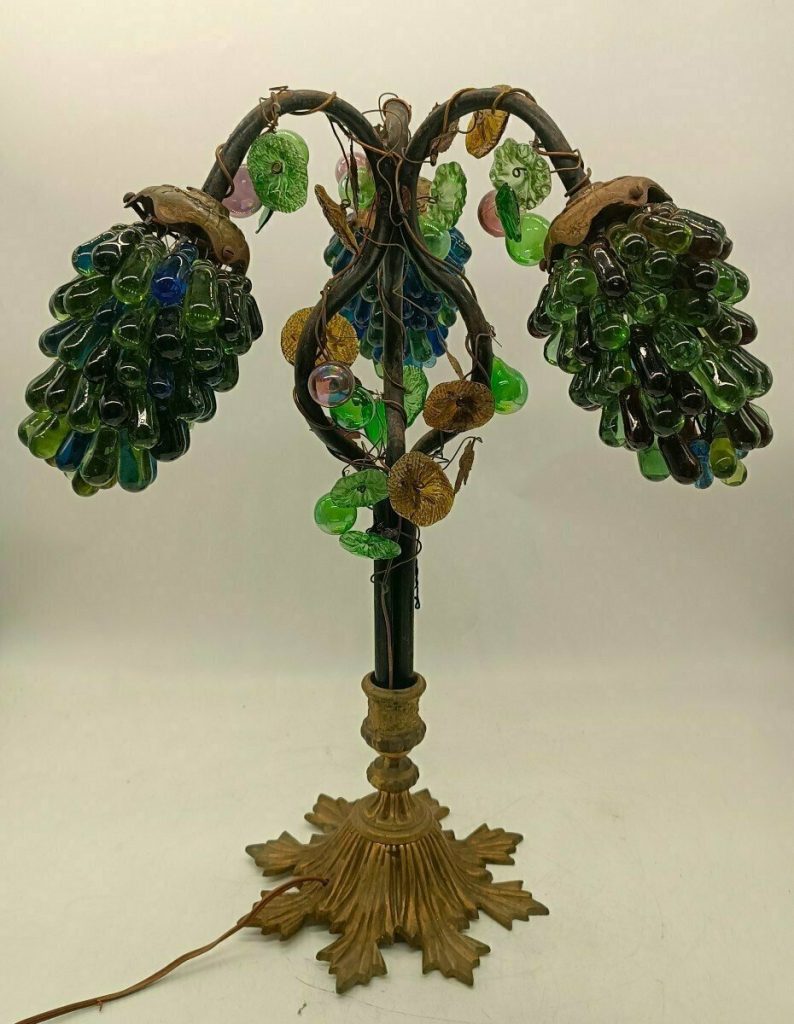
Art Nouveau Lamp With Murano Glass Lampshade in the Shape of Bunches of Grapes. © Antichita’ Taddei Gilberto
Symbolism and Spiritual Connection
Beyond their visual appeal, the natural motifs in Art Nouveau often represented more profound philosophical ideas or spiritual connections. The cycle of life, regeneration, and the interconnectedness of all living things were recurring themes depicted through the imagery of vines, flowers, intertwining branches, animals, and insects. The movement’s artists sought to evoke a sense of wonder, inviting viewers to contemplate the mysteries and interconnectedness of the natural world.
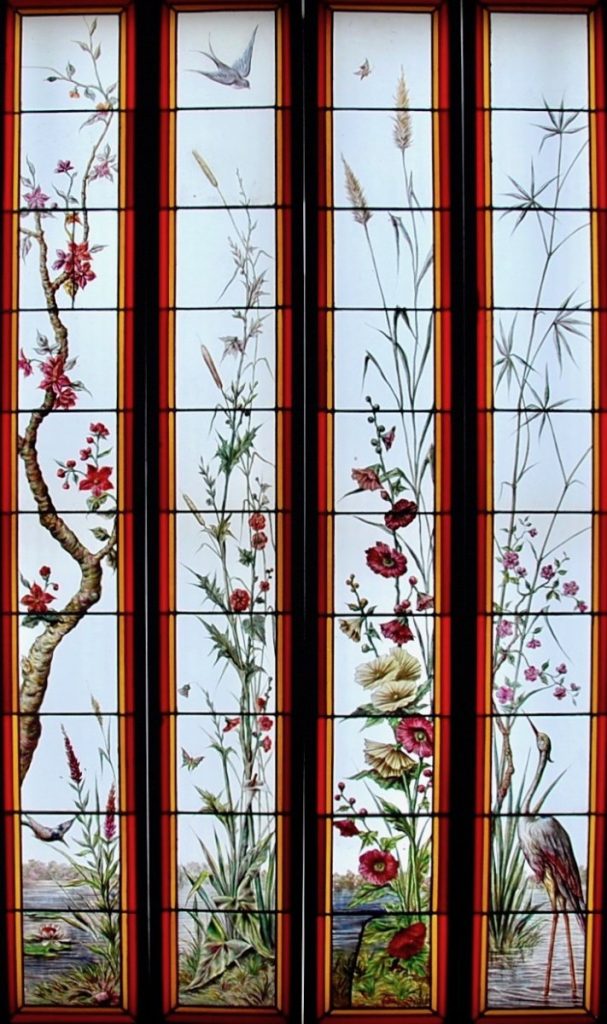
Set of stained glass windows depicting a crane standing at the edge of a lake, surrounded by butterflies, a kingfisher, and an array of blossoming flowers. © Antiquité Lassaussois
As the life became increasingly industrialized, the intimate connection between humans and the natural world began to disappear. In many ways, the natural world became a nuisance; weeds grew in agricultural fields and gardens where they were unwanted, wild animals scrounged through people’s trash and caused messes, pesticides were used to eliminate insects who made their way indoors. Proponents of Art Nouveau saw this disconnection between humans and nature, and sought to remind people of how beautiful the natural world can be.
The necklace below depicts a ceramic beetle clinging to a holly leaf. Below it hangs a real beetle, its shell shimmering with iridescent green and yellow. While insects are typically seen as pests, this piece instead raises it up as an object of beauty, a wonder that only nature could create. While the ceramic beetle is beautiful in its own way, it cannot capture the dazzling beauty of the real beetle’s iridescent shell. It highlights how truly incredible it is that nature could produce such a stunning thing, and how often that beauty is overlooked. We often take for granted the incredible things that exist all around us, and our lives would be so much richer if we only stopped to look. This is what lies at the heart of the Art Nouveau movement: harnessing the beauty of nature to remind us of our deep connection to the earth, and how fortunate we are to live in such a beautiful world.
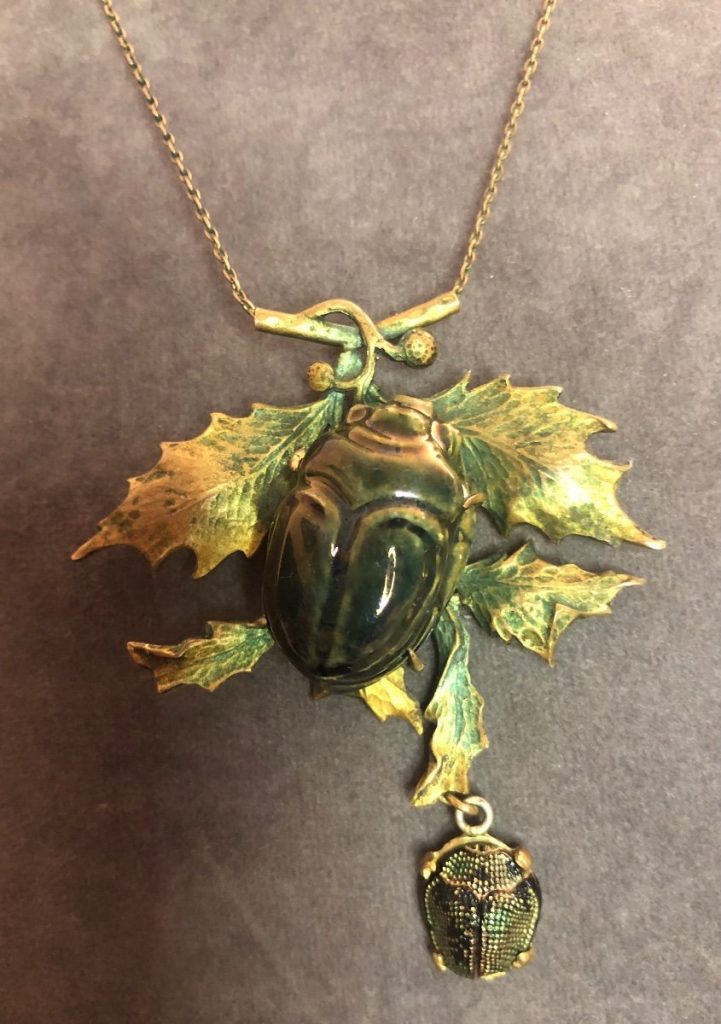
Art Nouveau beetle necklace in metal and ceramic with a real beetle. © Monica Antiquités
You May Like
Art Nouveau | Arts and Crafts | Jugendstil | Art Nouveau Jewelry | Art Nouveau Furniture | Art Nouveau Ceramics | Art Nouveau Lighting | Art Nouveau Glassware | Art Nouveau Decor | Art Nouveau Fine Arts




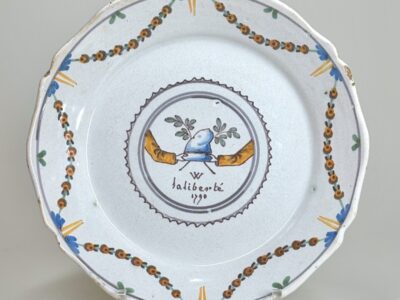




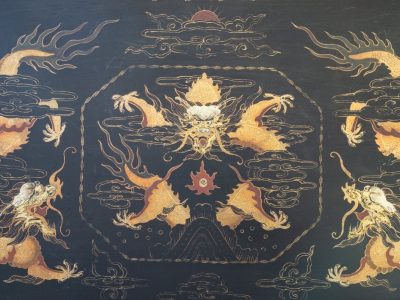


[…] a worthy student of Eugène Grasset, he began by successfully creating in an Art Nouveau style, where nature is the primary source of inspiration. Wood is a material he was particularly fond of. He also had a talent for giving a luxurious touch […]